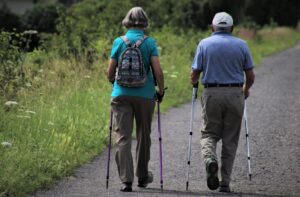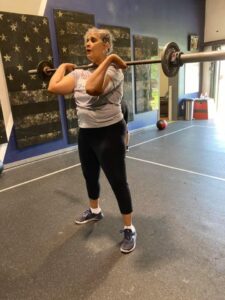Stand up for a moment and try this with us…
Lift one foot off the floor, are you balanced?
Now move your arms slowly overhead and back down to your sides, are you balanced?
Now, move the leg you’ve lifted, extend your leg straight in front of you, then re-bend your knee and push your foot back behind you.
Still good? Close your eyes. How about now?
One in four Americans aged 65+ falls each year.
Falls result in more than 2.8 million injuries treated in emergency departments annually, including over 800,000 hospitalizations and more than 27,000 deaths.
There could be really serious, immediate implications of a loss of balance. But the longer term results, even if no injury had happened, can be even more damaging. The quality of life can be really negatively impacted from a fear of falling and injury that results in overall limited activity and therefore less social engagements. Both turning into a physical and emotional decline, depression, social isolation and feeling completely helpless.
So what can you do?
You should start working on your balance today. Even right at this moment! While starting a strength training routine will be important you can also find small ways throughout your day to simply practice the challenge of balancing too.
But first, strength:
At CrossFit Oyster Point, we offer a weekly group class called the Legends, designed for people aged 45+ where we program and lead workouts with a slightly different approach. The goals remain the same: build strength, increase cardiovascular stamina, improve balance and boost overall quality of life.
Strength building will be a vital piece of improving balance. If your muscles simply can’t support your body and stabilize your skeletal system, you don’t stand a chance at staying upright when you’re bumped, you miss a step or the dog runs under your feet.
Practice:
The next most important component is practicing your balance! Practice results in new and improved connections from our brain and nervous system to our body and muscles. This can help improve reaction time and result in some improvements in that balance test we had you start out with. Keep in mind that this type of improvement has a ceiling that can only be surpassed with improvements in strength.
Legends practice balance and strength
Mix it up, add it into your daily life:
Here’s some ways to practice your balance every day:
- Stand on 1 foot whenever possible:
- brushing your teeth
- in line at the grocery store
- washing dishes
- talking on the telephone
- Build confidence in each leg:
- work your way to taking steps one at a time (rather than two feet per each step)
- when sitting to a chair or standing up, use just one leg to guide yourself down or up (using arm assistance is okay to start too!)
- stride-out when on a walk, build confidence in a longer stride
- perform much of your balance work while barefoot to build muscles in your feet as well!
- (all of these are addressing building strength and will be made easier with a strength and conditioning program as well!)
Continue to add variety in order to avoid plateauing on your progress:
- lift the opposite leg differently each time; foot behind you, foot straight out in front, leg out to the side, ect
- move your arms differently; out in front, to the side, overhead, continuously moving, ect
- close one eye, then both eyes (this makes it extra challenging…start out close to something to hold onto as you get the hang of it!)
- stand on different types of flooring…hard floors, soft carpet, plush pillows…the softer the base the more challenging it will be.
Improving your balance can be life saving…not only as an immediate reaction to catch yourself and avoid a fall but the journey it will take to improve it can result in an overall improvement in your quality of life and longevity!
https://www.facebook.com/crossfitop/videos/923812971333095/
Statistics from: https://www.ncoa.org/news/resources-for-reporters/get-the-facts/falls-prevention-facts/







